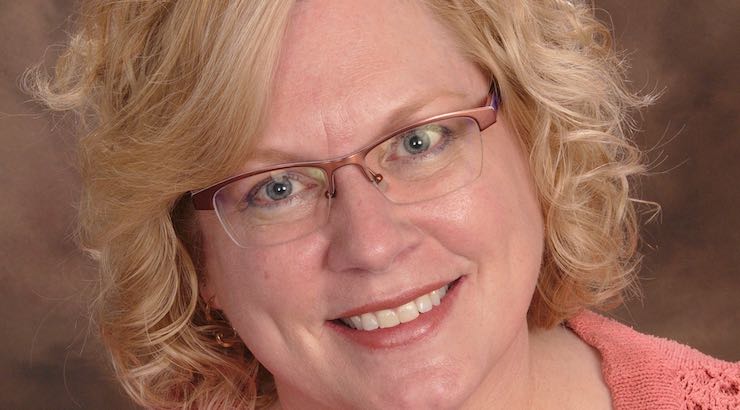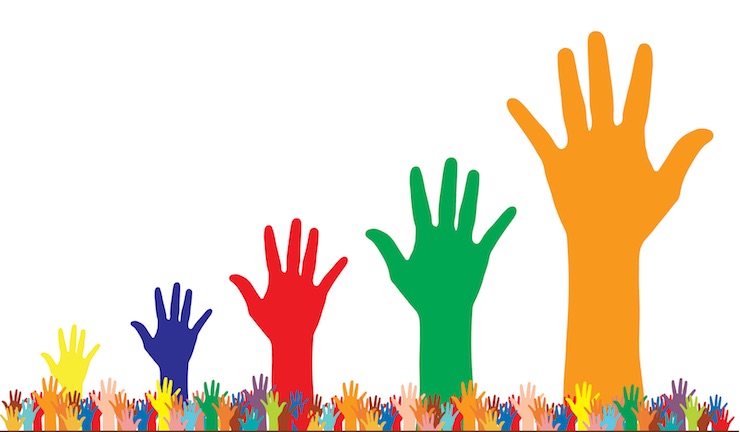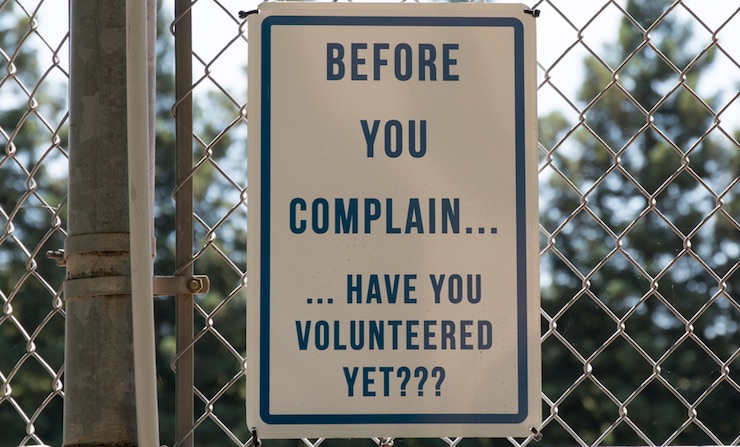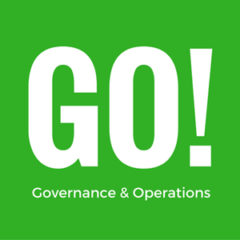Ruth Nicholson on Youth Soccer’s Invisible Hand
While the glory and the spotlight often go to the coaches and the players, it is the invisible work done behind the scenes by the less than glamourized administrators that actually keeps youth soccer rolling along. Ruth Nicholson is an expert in how youth soccer clubs work. After decades of working in the youth sports industry, Nicholson understands the youth soccer landscape intuitively and is a great resource on club governance and operations.

Frequently debated, we wanted to ask Nicholson the question “What is the real value of a youth soccer volunteer?”
The response was clear. Good volunteers in youth soccer are hard to replace and their value is usually not recognized. Worse, youth soccer clubs can suffer everything from embezzlement to tax fines without intelligent administrators and proper oversight.
There is a VERY High Cost of Not Investing in Your Club Administrators
Ruth Nicholson, Founder Nicholson Faciliatation and GO!
SoccerToday’s Interview with Ruth Nicholson
Diane Scavuzzo: Youth soccer volunteers are the backbone of thousands of youth soccer programs all across America. Why is that we so often hear that volunteers do not really have any “financial” value?
Ruth Nicholson: Volunteers are not free!
We tend to think that volunteers are infinitely replaceable and in some ways, disposable.

After all, we can just recruit another volunteer, right? This is an expensive approach.
Diane Scavuzzo: Why?
Ruth Nicholson: Years ago, I managed the volunteer staffing program for an international youth soccer tournament. The final volunteer schedules represented over 1,700 hours of volunteer labor.
Those hours were the equivalent of approximately 80% of a full-time employee — for an entire year to staff a four-day youth soccer tournament.
And, these hours did not include the time donated by the tournament committee and game scheduling staff.

Diane Scavuzzo: Those volunteer hours add up to $22,100 — the minimum wage of $13 x 1700 hours. It is volunteers who work behind the scenes to actually get kids and coaches on the field to play games. What can happen if the management of a youth soccer club doesn’t invest in their admin?
Ruth Nicholson: The simple truth is that without player registration, field and facility reservations, registration for leagues and tournaments, and uniform and equipment procurement, no club can field a team.
Players can’t practice or play games.
When a club does not pay attention to or invest in its administrative operations, many things can go wrong:
- A few people get saddled with most of the work.
- Our coaches are often expected to pick up the slack.

Few coaches want admin duties — confusion can reign, deadlines can be missed and the bottom line is the goal of a youth soccer program is to focus on the player and administrators pave the path for kids and coaches to get on the field.
Without administrators helping organize the millions of kids playing soccer on fields in every state, a variety of frustrating problems can happen — from player cards not being acquired in time to permit players to compete to fee collection issues that place undue stress on a club’s financial health to the loss of players and their families simply because of poor communication and unclear expectations — and, their resulting loss of patience.
Diane Scavuzzo: What would youth soccer look like without volunteers?

Ruth Nicholson: I think the cost of our pay-to-play system would increase and it would be even more expensive to play youth soccer.
Volunteers Pave The Path For Kids To Play Soccer.
Think about how much it would cost to hire people to work as registrars, field schedulers, team managers, and communication coordinators. I also believe that hiring additional youth soccer staff could make the experience more impersonal as clubs move away from connecting with their members who contribute to the organization.
As clubs move towards a business model, it is inevitable that players and parents become replaceable customers who are purchasing a commodity called youth soccer.
Diane Scavuzzo: What is the value of an hour of a volunteer person’s time?
Ruth Nicholson: For 2018, the national value was calculated at $25.43 per hour of volunteer time.
This is calculated by the Independent Sector, a national membership organization serving non-profits. The calculations include the average value of a volunteer hour across the entire United States, as well as for each state, the District of Columbia, and Puerto Rico. Each state has its own value of a volunteer hour. Arkansas has the lowest at $20.49 and Washington D.C. is the highest at $41.72 per hour.
Using the calculation from the Independent Sector for the state of Washington, the value of the 1,700 volunteer hours for the youth soccer tournament would be a total of $53,924.

Diane Scavuzzo: Why is a volunteer hour valued so high?
Ruth Nicholson: This figure is definitely higher than the minimum wage! Independent Sector calculates the value of volunteer time based on wages of non-supervisory workers based on information from the Bureau of Labor Statistics. Those calculations also include a 12% increase to estimate for fringe benefits. When someone with specialized skill volunteers to help — such as a doctor or lawyer or craftsperson — the value of his or her work is based on the volunteer work, not on his or her professional earning power.
Diane Scavuzzo: What are the invisible costs?
Ruth Nicholson: Imagine what it would cost to hire paid staff to do all the things that volunteers do and imagine developing job descriptions, finding candidates to apply, budgeting for salaries, filling out hiring paperwork, setting up and running regular payroll, training people for specific jobs, and supervising people as they do those jobs.

Diane Scavuzzo: Is this sustainable?
Ruth Nicholson: It is increasingly difficult to recruit and replace volunteers. Decades ago, many of our mothers worked at home. There was a potential volunteer labor pool that had negotiable time while kids were at school. Now we have significantly more two-parent households, as well as more single-parent households. In addition, in a pay-to-play culture, many families feel as if they are already paying for a service, so why should they have to volunteer in addition to those fees?
Plus, for decades, the volunteer management experts have told us that a volunteer is on a fast-track to burnout if he or she is regularly volunteering for more than an average of 10 hours a week over an extended period of time.

Diane Scavuzzo: What is a solution?
Ruth Nicholson: We all have to work together and we should value our volunteers more.
Diane Scavuzzo: What do you do?
Ruth Nicholson: I have been called an organizational alchemist, a reference to the medieval magician who transformed metals into gold. I teach boards of directors on how to function better and have more effective and shorter meetings.
In short, I develop strategic and tactical plans that meld coaching and administrative perspectives.
The goal is to create administrative processes that get work done in shorter periods of time and demand less effort and angst for our coaches. I mediate conflicts. I solve organizational puzzles so we can spend more time supporting our players and coaches. I Iove a good puzzle!
Diane Scavuzzo: You have been referred to as an innovator, what does that really mean?
Ruth Nicholson: I think of innovators as people who look at the ordinary in extraordinary ways.

The situations and facts are the same, but innovators see things differently in terms of patterns, connections, root causes, and from there, different types of solutions.
The favorite questions of innovators start with “What if….?”
It is great fun imaging that what seems impossible just might be — and often is — possible if approached in a different way.
Diane Scavuzzo: What can happen to a youth soccer club without good administration?
Ruth Nicholson: I believe that one of the elements of youth soccer that is the least understood is the role of the members of an organization’s board of directors. Most of our youth soccer organizations are non-profit corporations. Yes, I said “corporations.” Members of a board of directors are officers of a non-profit corporation.
Some years ago, I was engaged to help a soccer club board develop a new strategic plan. When I asked for a copy of their by-laws, nobody could identify the most current version. I then asked about their non-profit directors and officers’ liability insurance.
The response from the board was: “What is that?”

I explained that this insurance helps cover defense costs and judgments from lawsuits involving the club.
Without such that insurance, individual board members could be held personally liable for the actions of the club.
Unfortunately, the project got even worse when we discovered a secret agreement between the club treasurer, registrar, a past coach, and a past president that represented over $80,000 of financial mismanagement that spanned a number of years.
The outcome? Although the club is still in existence, it has lost almost two-thirds of its teams and has had to let multiple coaches and staff go.
The bottom line: Investing in a youth soccer club’s administrators can save enormous sums of money and protect years of work building a club.
Look for Ruth’s upcoming workshop at The Club Summit in Orlando, Florida in February 2020 on Managing Dysfunction in Boards of Directors.
Ruth Nicholson is an internationally certified professional facilitator, mediator, and organizational alchemist helping youth sports organizations better support coaches, teams, and players. She is the founder of GO! Offering proven governance, leadership, and administrative tools. Nicholson also has her own firm NICHOLSON FACILITATION.
As a coach for TeamGenius, Ruth helps sports organizations develop assessment and feedback programs for players, coaches, and referees. She was a co-creator of the international 2019 Think Tank to Improve Youth Sports which engaged over 60 speakers from two dozen sports. In 2018, Ruth was a finalist for the Hudl Innovator of the Year award for youth soccer. Her work has engaged coaches, sports professionals, and organizations in North America, Africa, Asia, Australia, Europe, and South America.





